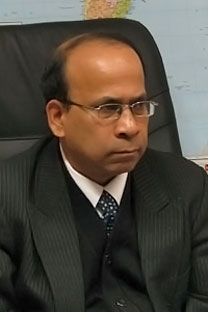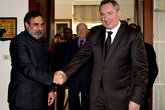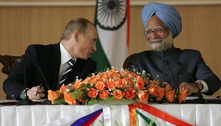Pharma, diamonds & energy most promising areas for Indo-Russian cooperation
 |
| Arun Mohanty. Source: WPFDC |
Relations between Russia and India are improving day by day, yet the two countries need to work on the development of their economic component as well, a leading academic and Russia expert told RIR in an interview. The most promising areas for enhancing economic cooperation are pharmaceuticals, diamonds, and energy, Professor Arun Mohanty, Director of the Centre for Russian and Central Asian Studies at the Jawaharlal Nehru University said.
“Generally speaking, our relations are improving day by day – thus, the military-technical cooperation has entered a new phase of joint projects in the development and production of military products,” Mohanty said. “We are two huge economies, and we are not satisfied by the turnover of just $11 billion. In my opinion, there are several directions that we need to work more on. First, this is the pharmaceuticals. The Russian pharmaceutical market is worth $25 billion, while India’s exports of pharma products to Russia is about $800 million, so surely it is possible to raise the turnover in this area. Our medicines are of the same quality and are less expensive than European ones, but European manufacturers act as a cartel, while Indian producers work independently.”
The academician also said the diamond industry has untapped potential. “Russia controls about 25 percent of the world’s diamond reserves, while the Indian diamond processing industry is the largest in the world. Nevertheless, the Russian diamonds mainly come to India indirectly – through Israel and Europe. I think if we started to work more closely in this industry, then trade would increase to $4–5 billion,” Mohanty said.
The organization of oil supplies from Russia directly to India can also have a powerful impact on the economic cooperation between the two countries, the academic said. Energy could become “the main pillar of our cooperation”. However, this opportunity is not fully utilized.
Image issues
“There is an image problem, the problem of information,” Mohanty said. “Russian business elites still look primarily towards Europe. However, India, in recent years, has become an industrial power. At the same time, equipment that Russian companies buy in Europe is much more expensive than Indian products. There is a problem in the Indian business environment as well ... In India, more than 80 percent of the companies are controlled by the private sector (in Russia the situation is the same), but our two private sectors, unfortunately, do not look at each other. We should work on ensuring that our players communicate with yours, and vice versa,” said Mohanty, noting that the state “should encourage this process.”
Indian business elites, in his opinion, need to get “more information about the current situation in Russia, including the modernization of its industry, in particular, the military-industrial complex.”
Geopolitics and the Customs Union
“The geographical factors play an important role as well. After the collapse of the USSR, cargo comes to India through Finland and other countries. It takes 50 days to reach India. Therefore, a North-South International Transport Corridor offers great opportunities, which would connect Iranian ports with Mumbai. This concept is now being actively discussed, with Iran being ready to work seriously on this issue. In this case, containers will arrive in 25 days instead of 50,” said the professor.
He added that the possible rapprochement of India with the Customs Union could influence the growth of Indian and Russian turnover.
“The creation of a free trade area with the Customs Union would contribute to the growth of our trade. If other post-Soviet countries join, then this space will become a huge market for Indian companies,” Mohanty added.
All rights reserved by Rossiyskaya Gazeta.
Subscribe
to our newsletter!
Get the week's best stories straight to your inbox

